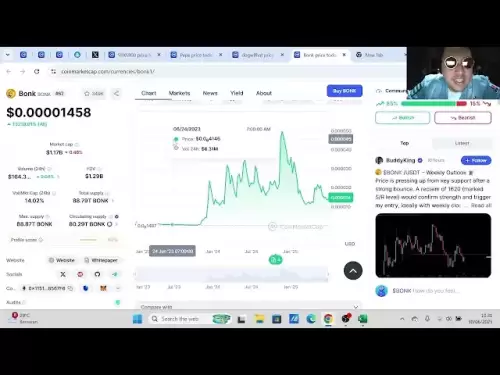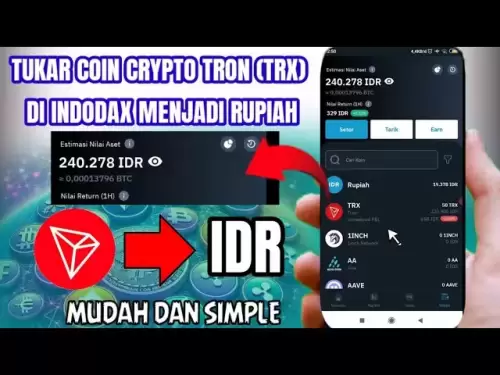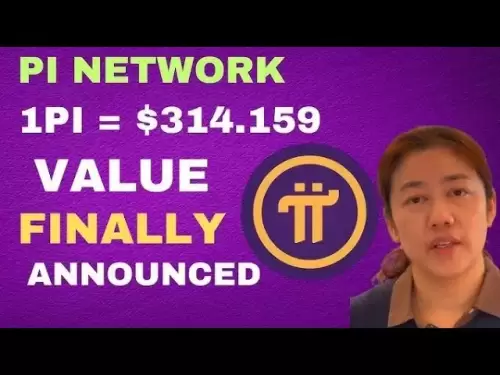-
 Bitcoin
Bitcoin $108,489.6704
1.13% -
 Ethereum
Ethereum $2,502.0528
2.92% -
 Tether USDt
Tether USDt $1.0002
0.00% -
 XRP
XRP $2.1941
0.51% -
 BNB
BNB $655.3375
1.00% -
 Solana
Solana $151.5977
1.27% -
 USDC
USDC $0.9999
0.00% -
 TRON
TRON $0.2768
0.32% -
 Dogecoin
Dogecoin $0.1676
2.86% -
 Cardano
Cardano $0.5675
0.98% -
 Hyperliquid
Hyperliquid $40.6109
7.48% -
 Bitcoin Cash
Bitcoin Cash $500.7746
2.09% -
 Sui
Sui $2.8328
2.03% -
 Chainlink
Chainlink $13.4452
1.26% -
 UNUS SED LEO
UNUS SED LEO $9.1623
0.39% -
 Avalanche
Avalanche $18.2267
2.24% -
 Stellar
Stellar $0.2382
0.00% -
 Toncoin
Toncoin $2.8885
1.68% -
 Shiba Inu
Shiba Inu $0.0...01159
0.91% -
 Litecoin
Litecoin $87.1827
0.88% -
 Hedera
Hedera $0.1511
2.90% -
 Monero
Monero $315.4992
-0.59% -
 Polkadot
Polkadot $3.4663
2.34% -
 Bitget Token
Bitget Token $4.6118
-0.65% -
 Dai
Dai $1.0000
-0.01% -
 Ethena USDe
Ethena USDe $1.0003
0.02% -
 Uniswap
Uniswap $7.2989
4.69% -
 Pepe
Pepe $0.0...01003
5.73% -
 Aave
Aave $275.5616
7.15% -
 Pi
Pi $0.5181
-2.49%
How to transfer IOTA from Bitstamp to OKX
To transfer IOTA from Bitstamp to OKX, ensure active accounts on both, check fees and limits, and follow security measures like 2FA for a smooth transaction.
Apr 04, 2025 at 05:14 am
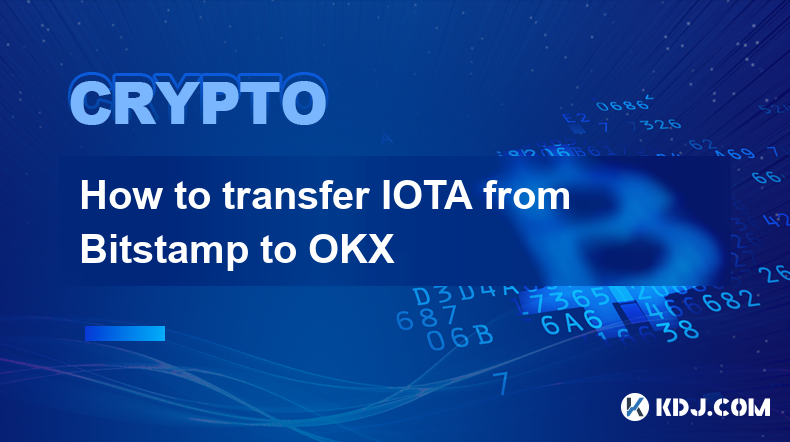
Transferring IOTA from Bitstamp to OKX involves several steps that require careful attention to detail to ensure a smooth and secure transaction. IOTA, a distributed ledger technology that uses a directed acyclic graph (DAG) instead of a blockchain, is known for its feeless transactions and scalability. Before initiating the transfer, it's crucial to understand the specific requirements and potential fees associated with both exchanges. This guide will walk you through the process, highlighting key steps and considerations to help you successfully move your IOTA tokens.
Preparing for the Transfer
Before you begin the transfer process, there are several preparatory steps you should take to ensure everything goes smoothly. First, ensure that you have an active account on both Bitstamp and OKX. If you haven't registered yet, you'll need to complete the necessary verification processes on both platforms. Next, make sure you have sufficient IOTA in your Bitstamp account to cover the amount you wish to transfer. It's also important to check the withdrawal limits and any associated fees on Bitstamp, as well as the deposit limits and fees on OKX.
Withdrawing IOTA from Bitstamp
To withdraw IOTA from Bitstamp, follow these steps:
- Log into your Bitstamp account and navigate to the "Withdraw" section.
- Select IOTA from the list of available cryptocurrencies.
- Enter the amount of IOTA you wish to withdraw. Be mindful of the minimum and maximum withdrawal limits.
- Provide the destination address, which should be your OKX IOTA deposit address. You can find this by logging into your OKX account and navigating to the deposit section for IOTA.
- Review the transaction details carefully, including any fees that may be charged.
- Confirm the withdrawal. You may need to enter a two-factor authentication (2FA) code to proceed.
Depositing IOTA to OKX
Once you've initiated the withdrawal from Bitstamp, you'll need to ensure that the IOTA tokens are successfully deposited into your OKX account. Here's how to do it:
- Log into your OKX account and go to the "Deposit" section.
- Select IOTA from the list of available cryptocurrencies.
- Copy the deposit address provided by OKX. This is the address you should have used when withdrawing from Bitstamp.
- Monitor the transaction on a blockchain explorer like the IOTA Tangle explorer to track the progress of your transfer.
- Wait for the transaction to be confirmed. Once confirmed, the IOTA should appear in your OKX account.
Verifying the Transfer
After initiating the transfer, it's important to verify that the IOTA has been successfully moved from Bitstamp to OKX. Here are some steps to help you confirm the transaction:
- Check your Bitstamp account to ensure the withdrawal has been processed and the IOTA balance has been reduced accordingly.
- Check your OKX account to confirm that the IOTA has been credited to your account. This may take some time depending on network congestion and confirmation times.
- Use a blockchain explorer to track the transaction and ensure it has been completed successfully. You can enter the transaction hash or the destination address to view the status.
Understanding Fees and Limits
Both Bitstamp and OKX have their own fee structures and limits for IOTA transactions. It's important to understand these to avoid any surprises during the transfer process. Here are some key points to consider:
- Withdrawal fees on Bitstamp: Bitstamp may charge a fee for withdrawing IOTA. This fee can vary based on network conditions and should be checked before initiating the transfer.
- Deposit fees on OKX: OKX may also charge a fee for depositing IOTA, although this is less common. Always check the fee structure on OKX to ensure you're aware of any costs.
- Minimum and maximum limits: Both exchanges have minimum and maximum limits for IOTA transactions. Ensure that the amount you're transferring falls within these limits.
Security Considerations
Security is paramount when transferring cryptocurrencies like IOTA. Here are some tips to help you protect your assets during the transfer process:
- Use strong passwords and enable two-factor authentication (2FA) on both Bitstamp and OKX.
- Verify the deposit address multiple times to ensure it's correct. A single mistake can result in the loss of your IOTA.
- Be cautious of phishing attempts. Always access the official websites of Bitstamp and OKX directly and never through links provided in emails or messages.
- Keep your private keys and recovery phrases secure. Never share them with anyone and store them in a safe place.
Troubleshooting Common Issues
Sometimes, issues can arise during the transfer process. Here are some common problems and how to address them:
- Transaction not appearing on OKX: If the IOTA doesn't appear in your OKX account after a reasonable amount of time, check the transaction status on a blockchain explorer. If the transaction is confirmed but not credited, contact OKX support.
- Withdrawal not processing on Bitstamp: If the withdrawal from Bitstamp is stuck, ensure you've entered all details correctly and that you have sufficient funds. If the issue persists, contact Bitstamp support.
- Incorrect deposit address: If you've entered the wrong deposit address, the IOTA may be lost. In this case, contact both Bitstamp and OKX support immediately for assistance.
Additional Tips for a Smooth Transfer
To ensure a smooth transfer of IOTA from Bitstamp to OKX, consider the following additional tips:
- Transfer during off-peak hours: Network congestion can affect transaction times. Transferring during off-peak hours may result in faster processing.
- Keep records: Document the transaction details, including the amount, date, and transaction hash. This can be helpful for troubleshooting or tax purposes.
- Stay informed: Keep up-to-date with any changes in the fee structures or policies of both Bitstamp and OKX to avoid unexpected issues.
Common Questions Related to Transferring IOTA from Bitstamp to OKX
Q: How long does it take to transfer IOTA from Bitstamp to OKX?
A: The transfer time can vary depending on network congestion and confirmation times. Typically, it can take anywhere from a few minutes to a few hours.
Q: Are there any fees associated with transferring IOTA from Bitstamp to OKX?
A: Yes, both Bitstamp and OKX may charge fees for withdrawing and depositing IOTA. Always check the fee structures on both platforms before initiating a transfer.
Q: What should I do if my IOTA transfer is delayed?
A: If your transfer is delayed, first check the transaction status on a blockchain explorer. If the transaction is confirmed but not credited to your OKX account, contact OKX support. If the withdrawal from Bitstamp is stuck, contact Bitstamp support.
Q: Can I transfer IOTA from Bitstamp to OKX without a fee?
A: While IOTA transactions on the Tangle are feeless, both Bitstamp and OKX may charge fees for processing the withdrawal and deposit. Check the fee structures on both platforms to understand any potential costs.
Q: Is it safe to transfer IOTA from Bitstamp to OKX?
A: Yes, it is safe as long as you follow security best practices, such as using strong passwords, enabling 2FA, and verifying the deposit address multiple times. Always be cautious of phishing attempts and keep your private keys secure.
Disclaimer:info@kdj.com
The information provided is not trading advice. kdj.com does not assume any responsibility for any investments made based on the information provided in this article. Cryptocurrencies are highly volatile and it is highly recommended that you invest with caution after thorough research!
If you believe that the content used on this website infringes your copyright, please contact us immediately (info@kdj.com) and we will delete it promptly.
- Ripple XRP, Bitcoin, and Solaris Presale: What's the Buzz?
- 2025-06-30 18:50:11
- SpaceX, Mirror Tokens, and Investors: A Wild Ride to the Future?
- 2025-06-30 19:10:22
- Arbitrum (ARB) and Robinhood: Partnership Rumors Fuel Price Surge to $0.4289?
- 2025-06-30 19:10:22
- Jasmy Coin, Bitcoin, and the Rise of Solaris Presale: What's the Buzz?
- 2025-06-30 18:30:12
- XRP, SEC, and Ripple: A New Chapter?
- 2025-06-30 19:15:13
- Arbitrum's ARB Price Surges Amid Robinhood Partnership Buzz: A New York Minute on Crypto
- 2025-06-30 19:30:12
Related knowledge
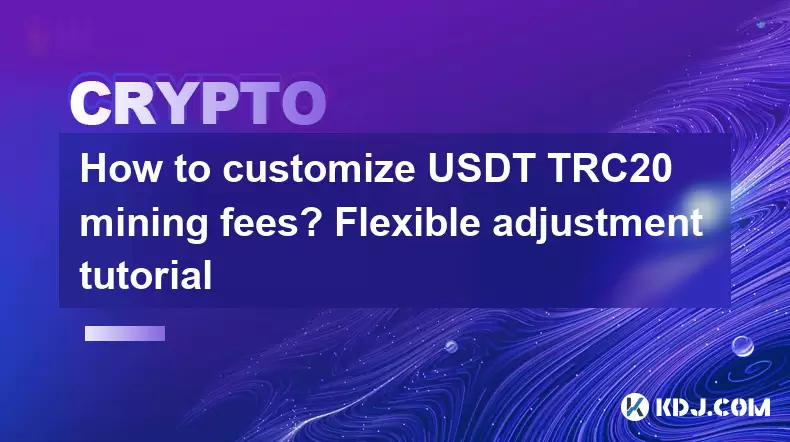
How to customize USDT TRC20 mining fees? Flexible adjustment tutorial
Jun 13,2025 at 01:42am
Understanding USDT TRC20 Mining FeesMining fees on the TRON (TRC20) network are essential for processing transactions. Unlike Bitcoin or Ethereum, where miners directly validate transactions, TRON uses a delegated proof-of-stake (DPoS) mechanism. However, users still need to pay bandwidth and energy fees, which are collectively referred to as 'mining fe...
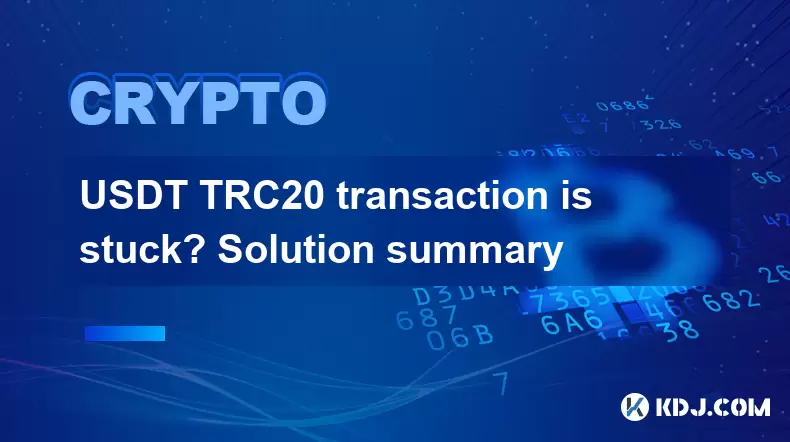
USDT TRC20 transaction is stuck? Solution summary
Jun 14,2025 at 11:15pm
Understanding USDT TRC20 TransactionsWhen users mention that a USDT TRC20 transaction is stuck, they typically refer to a situation where the transfer of Tether (USDT) on the TRON blockchain has not been confirmed for an extended period. This issue may arise due to various reasons such as network congestion, insufficient transaction fees, or wallet-rela...
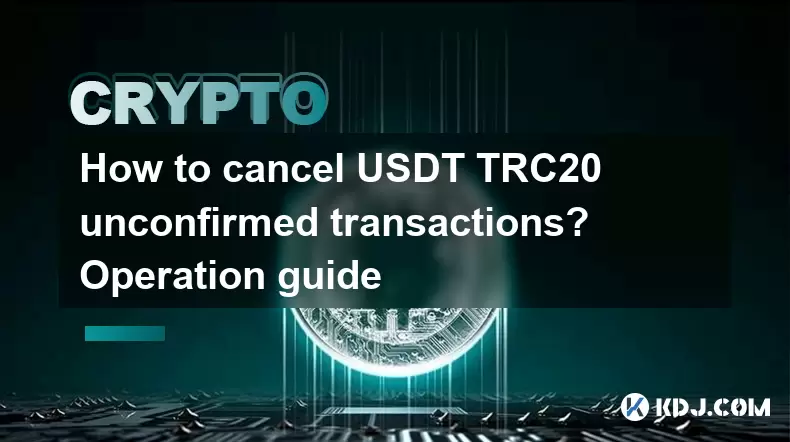
How to cancel USDT TRC20 unconfirmed transactions? Operation guide
Jun 13,2025 at 11:01pm
Understanding USDT TRC20 Unconfirmed TransactionsWhen dealing with USDT TRC20 transactions, it’s crucial to understand what an unconfirmed transaction means. An unconfirmed transaction is one that has been broadcasted to the blockchain network but hasn’t yet been included in a block. This typically occurs due to low transaction fees or network congestio...
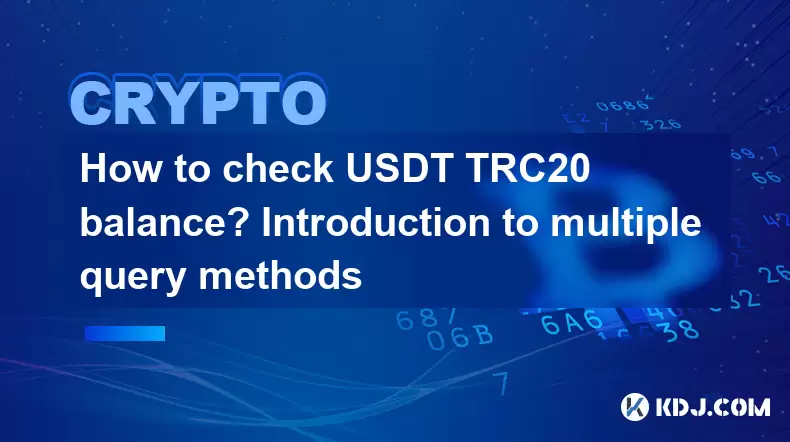
How to check USDT TRC20 balance? Introduction to multiple query methods
Jun 21,2025 at 02:42am
Understanding USDT TRC20 and Its ImportanceUSDT (Tether) is one of the most widely used stablecoins in the cryptocurrency market. It exists on multiple blockchain networks, including TRC20, which operates on the Tron (TRX) network. Checking your USDT TRC20 balance accurately is crucial for users who hold or transact with this asset. Whether you're sendi...
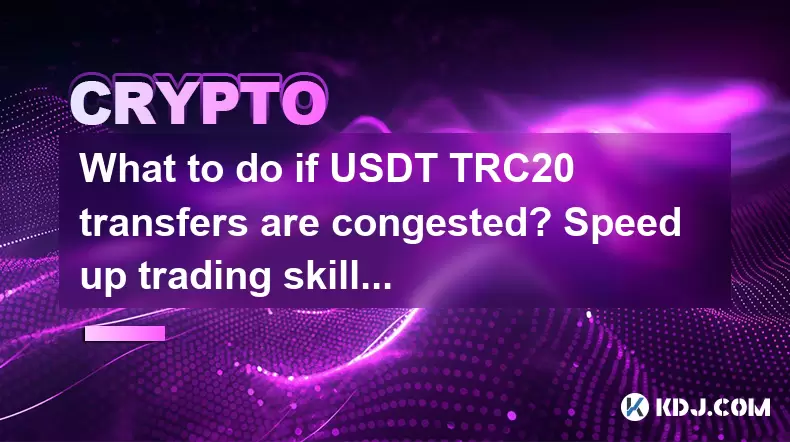
What to do if USDT TRC20 transfers are congested? Speed up trading skills
Jun 13,2025 at 09:56am
Understanding USDT TRC20 Transfer CongestionWhen transferring USDT TRC20, users may occasionally experience delays or congestion. This typically occurs due to network overload on the TRON blockchain, which hosts the TRC20 version of Tether. Unlike the ERC20 variant (which runs on Ethereum), TRC20 transactions are generally faster and cheaper, but during...
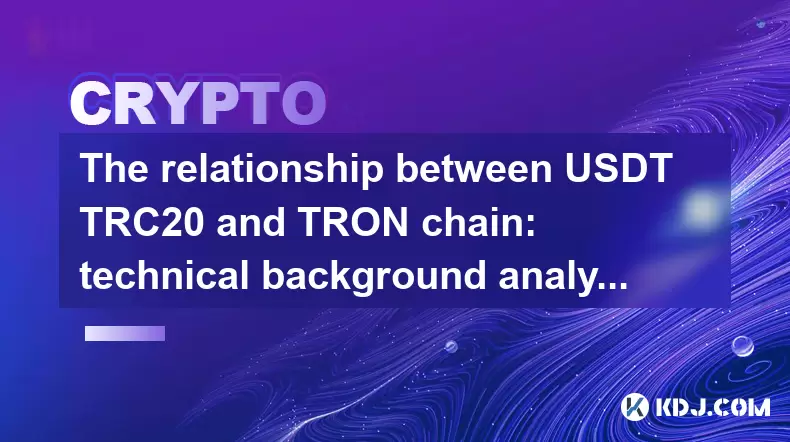
The relationship between USDT TRC20 and TRON chain: technical background analysis
Jun 12,2025 at 01:28pm
What is USDT TRC20?USDT TRC20 refers to the Tether (USDT) token issued on the TRON blockchain using the TRC-20 standard. Unlike the more commonly known ERC-20 version of USDT (which runs on Ethereum), the TRC-20 variant leverages the TRON network's infrastructure for faster and cheaper transactions. The emergence of this version came as part of Tether’s...

How to customize USDT TRC20 mining fees? Flexible adjustment tutorial
Jun 13,2025 at 01:42am
Understanding USDT TRC20 Mining FeesMining fees on the TRON (TRC20) network are essential for processing transactions. Unlike Bitcoin or Ethereum, where miners directly validate transactions, TRON uses a delegated proof-of-stake (DPoS) mechanism. However, users still need to pay bandwidth and energy fees, which are collectively referred to as 'mining fe...

USDT TRC20 transaction is stuck? Solution summary
Jun 14,2025 at 11:15pm
Understanding USDT TRC20 TransactionsWhen users mention that a USDT TRC20 transaction is stuck, they typically refer to a situation where the transfer of Tether (USDT) on the TRON blockchain has not been confirmed for an extended period. This issue may arise due to various reasons such as network congestion, insufficient transaction fees, or wallet-rela...

How to cancel USDT TRC20 unconfirmed transactions? Operation guide
Jun 13,2025 at 11:01pm
Understanding USDT TRC20 Unconfirmed TransactionsWhen dealing with USDT TRC20 transactions, it’s crucial to understand what an unconfirmed transaction means. An unconfirmed transaction is one that has been broadcasted to the blockchain network but hasn’t yet been included in a block. This typically occurs due to low transaction fees or network congestio...

How to check USDT TRC20 balance? Introduction to multiple query methods
Jun 21,2025 at 02:42am
Understanding USDT TRC20 and Its ImportanceUSDT (Tether) is one of the most widely used stablecoins in the cryptocurrency market. It exists on multiple blockchain networks, including TRC20, which operates on the Tron (TRX) network. Checking your USDT TRC20 balance accurately is crucial for users who hold or transact with this asset. Whether you're sendi...

What to do if USDT TRC20 transfers are congested? Speed up trading skills
Jun 13,2025 at 09:56am
Understanding USDT TRC20 Transfer CongestionWhen transferring USDT TRC20, users may occasionally experience delays or congestion. This typically occurs due to network overload on the TRON blockchain, which hosts the TRC20 version of Tether. Unlike the ERC20 variant (which runs on Ethereum), TRC20 transactions are generally faster and cheaper, but during...

The relationship between USDT TRC20 and TRON chain: technical background analysis
Jun 12,2025 at 01:28pm
What is USDT TRC20?USDT TRC20 refers to the Tether (USDT) token issued on the TRON blockchain using the TRC-20 standard. Unlike the more commonly known ERC-20 version of USDT (which runs on Ethereum), the TRC-20 variant leverages the TRON network's infrastructure for faster and cheaper transactions. The emergence of this version came as part of Tether’s...
See all articles























